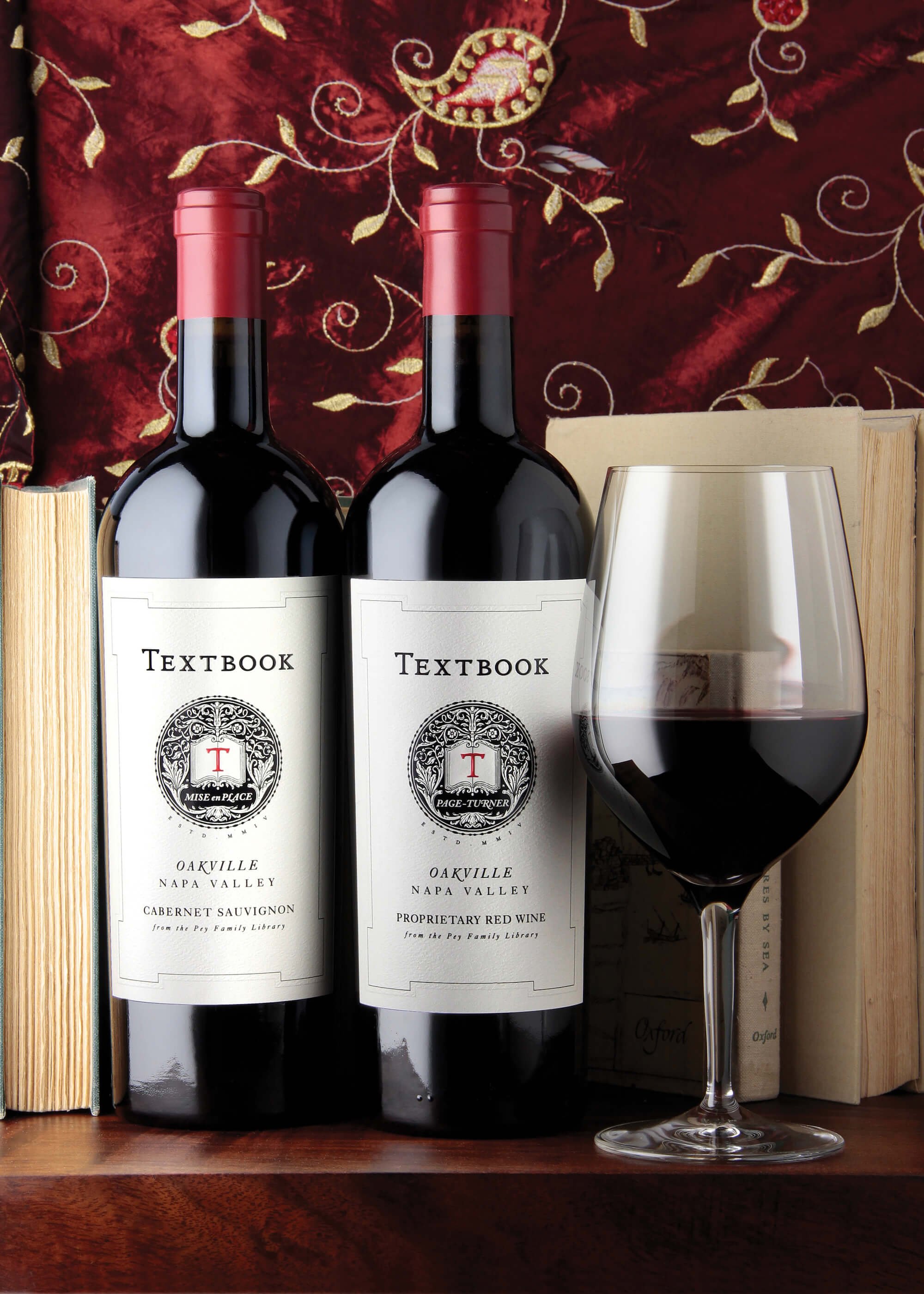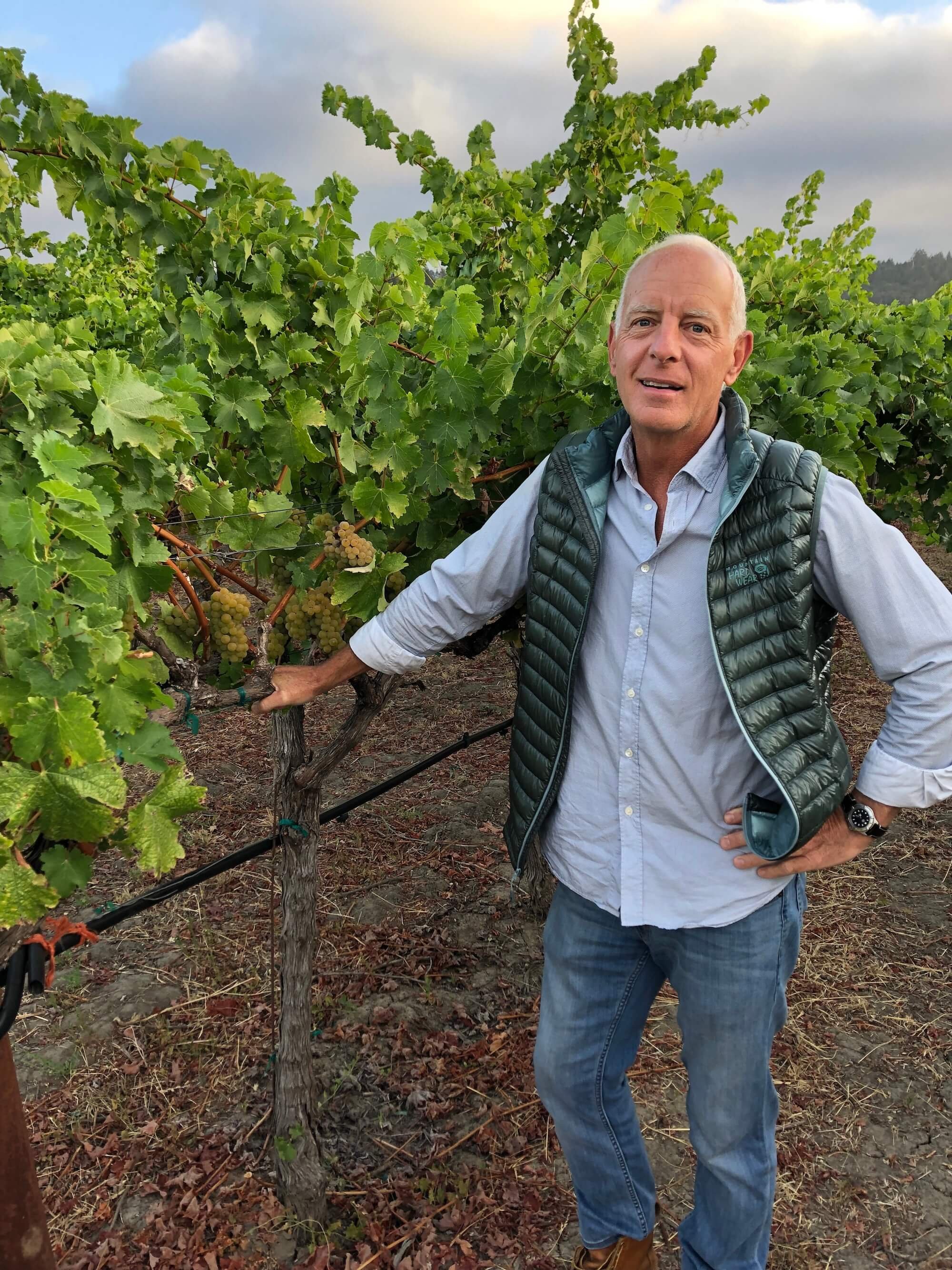How Napa Valley Winemaker Jonathan Pey is Both Textbook & Anything But
Jonathan Pey’s decision to call his Napa Valley winery TEXTBOOK began with a comment made by his late wife, Sue, upon tasting their first vintage of Oakville Cabernet Sauvignon straight out of the barrel: “It was dense, complex, aromatic, and textured,” he explained, everything top quality Oakville cabernets are renowned for. A winemaker as well, “Sue said to me, ‘It’s classic Oakville cabernet sauvignon; it’s ‘textbook.’”
Pey’s Napa Valley cabernets may be “textbook” for the region in terms of taste and texture, but in several other ways they are anything but: his winemaking approach results in wines averaging a relatively moderate ABV of around 13.3%, (Napa is famed for being able to push the cabernet octane to as high as 16%,) utilizing French, rather than American oak for barrel aging, and also maintaining a price point of under $33 per bottle. To put that price in context, one of Pey’s Oakville vineyard neighbors is none other than Screaming Eagle, whose cult cabs routinely command prices in the 4- and 5-figures, depending on vintage. Other notable vineyard neighbors include Dalla Valle, Rudd Estate, Opus One, and Harlan Estate.
It’s no surprise that TEXTBOOK’s first vintage in 2004 was already showcasing exceptional qualities in the hands of Pey, a wine-industry veteran who had decades of experience forging relationships with top Napa Valley growers. His Oakville vineyards include two preeminent sites for cabernet sauvignon: Holmes Vineyard, at the foot of the Mayacamas Mountains, and Vyborny Vineyard, that which abuts grapes destined to be Screaming Eagle. Pey also selected ideal sites throughout other Napa Valley AVAs to be able to showcase not only textbook, classically-made cabernets, but merlots, sauvignon blancs, and chardonnays as well.
I spoke to Pey about his “bold but balanced” winemaking style that is both rooted in classical technique and produces textbook wines, while still being able to demonstrate forward-thinking and out-of-the-box approaches, as well as the future of TEXTBOOK and Napa Valley in general.
Classical Winemaking Technique for Classic Grapes
Pey cut his teeth in the vineyards of Bordeaux, so naturally his personal style errs on the side of French, evident not only in his choice of oak, but in his reverence for old world philosophies of winemaking: “It’s an old craft that we try to respect,” he says. “Grow good grapes, treat them gently in the cellar, and strive for a balanced style.” He also emphasizes the intentionality of all of his choices: “We farm carefully, use a lot of handwork in the vineyard—along with machine harvesting when it makes sense—use great barrels, (but judiciously,) and avoid some of the winemaking shortcuts that are commonly used by some larger wineries today.”
Achieving a lower ABV in his wine was also a conscious decision, similarly rooted in balance: “While we want to show exemplary Napa cabernet sauvignon attributes such as texture, color, and aromatics, we also want to achieve a more balanced style than many Napa cabernets on the market today,” he says. “So, we harvest a bit earlier than many of our neighbors in order to keep the alcohol percentage lower.”
French Oak Versus American Oak
A side-by-side tasting of a Burgundy chardonnay against a California chardonnay usually demonstrates everything you need to know about French versus American oak. French oak typically is more restrained in character and imparts roasted flavors such as baking spice and coffee, whereas American oak tends to be bolder and sweeter in flavor, imparting notes such as vanilla, coconut, and dill.
Because cabernet has such bold flavors unto itself, it is often seen as an appropriate match for the fullness of American oak, but Pey’s approach with French oak was intentionally rooted in nuance: “There’s an elegance that good French oak brings, especially to cabernet sauvignon, presenting notes of dark chocolate, roasted coffee, and savory spices with a more subtle mouthfeel,” he says. That French oak is significantly more expensive to source in the U.S. makes his consumer-friendly price point all the more admirable.
For that matter, he allows an unusually generous portion—nearly 66%—of his cabernet to be untreated by oak, allowing it to fully express its grape and vineyard character: “We try not to exceed about a third of each vintage being aged in new French oak so that the wine, the Napa Valley vineyards it comes from, and the noble cabernet attributes can all shine through.”
Sustainable Practices for Future Planning
The news from California over several of the previous harvest seasons has made it clear that grape growers and winemakers can’t afford to be only reactive where the growing threat of drought and fires are concerned, and Pey has already taken strides to be proactive on this front: “Sustainable irrigation is our way of planning for drought by monitoring and maximizing water usage in Napa Valley’s aquifers,” he says. “We use drip irrigation judiciously in conjunction with soil and hydro science.”
In addition to irrigation practices, Pey also allows symbiotic groundcover in his vineyard sites, which has benefits not only for irrigation but broad environmental impact: “Ground covers harbor beneficial insects, so we typically don't mind some vegetative growth in the vineyards. It can foster ‘good bugs’ and help retain water,” he explains.
The Future of TEXTBOOK and Napa Valley
Right now, Pey’s winemaking focus is on using his winemaking skill to showcase the nuances of individual appellations, an initiative inspired specifically by feedback from his consumers: “We’re listening to our loyal TEXTBOOK drinkers—what they want, and what really excites their palates,” he says. “We’re focusing on some appellation-specific, cabernet-based wines made using the classical winemaking traditions I touched on earlier.”
As for the Napa Valley at large and TEXTBOOK’s role within it, Pey concludes with thoughts about not only sustainable agricultural practices but sustainable wine tourism as well: “It’s no secret that Napa has become a popular vacation destination. It’s important for visitors, and especially for us as winemakers, to savor this beautiful place and not to exploit it. At TEXTBOOK, we feel it’s our responsibility to act as stewards of the land and care for it in a way that preserves it for future generations.”
For further reading on Napa Valley, see How Vintner Lindsay Hoopes Found a Silver Living from the Epic Napa Fires.



